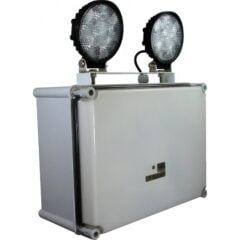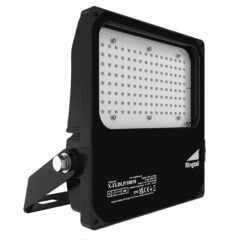Question the usefulness of low lumen LED Emergency Twinspots.
Why do we have Emergency Twinspots?
Emergency Twinspot lights are used in either high out of reach positions or where a large area needs to be covered by emergency lighting. Traditionally they used to have 20 watt halogen lamps. Each lamp would achieve 300 – 400 lumens allowing you to bathe a large area in emergency lighting, you could achieve up to 800 lumens if both heads were pointed at the same spot. This would allow you to install the twinspot in a very high position.


So what do you need when retrofitting?
When you are replacing a traditional halogen twinspot then you need a LED emergency twinspot with a similar or better lumen output. When looking for your replacement, if you see a lumen figure quoted of around 500 lumens and it doesn’t specifically say “combined” or “each head”, then it is probably 250 lumens per head. This would be far short of what you are replacing and the installation may not meet the BS 5266-1:2016 standard.
Why are low lumen twinspots in existance?
With the drive to lower power consumption and to miniaturise luminaires, manufacturers put smaller batteries inside smaller fittings and therefore the power output of the light is less. Unfortunately, if you want to have small, lower powered emergency twinspots then you have to have lower output. As the small batteries still need to power the twinspot heads for 3 hours. But this is false economy when it comes to replacing emergency twinspots as you need high output for a full 3 hour duration.
If you need higher lumen output, then you need bigger batteries that consume more power and this is the whole point of a LED emergency twinspot.
Our LED emergency twinspots are all high powered so that you can safely replace your existing fittings when needed.



